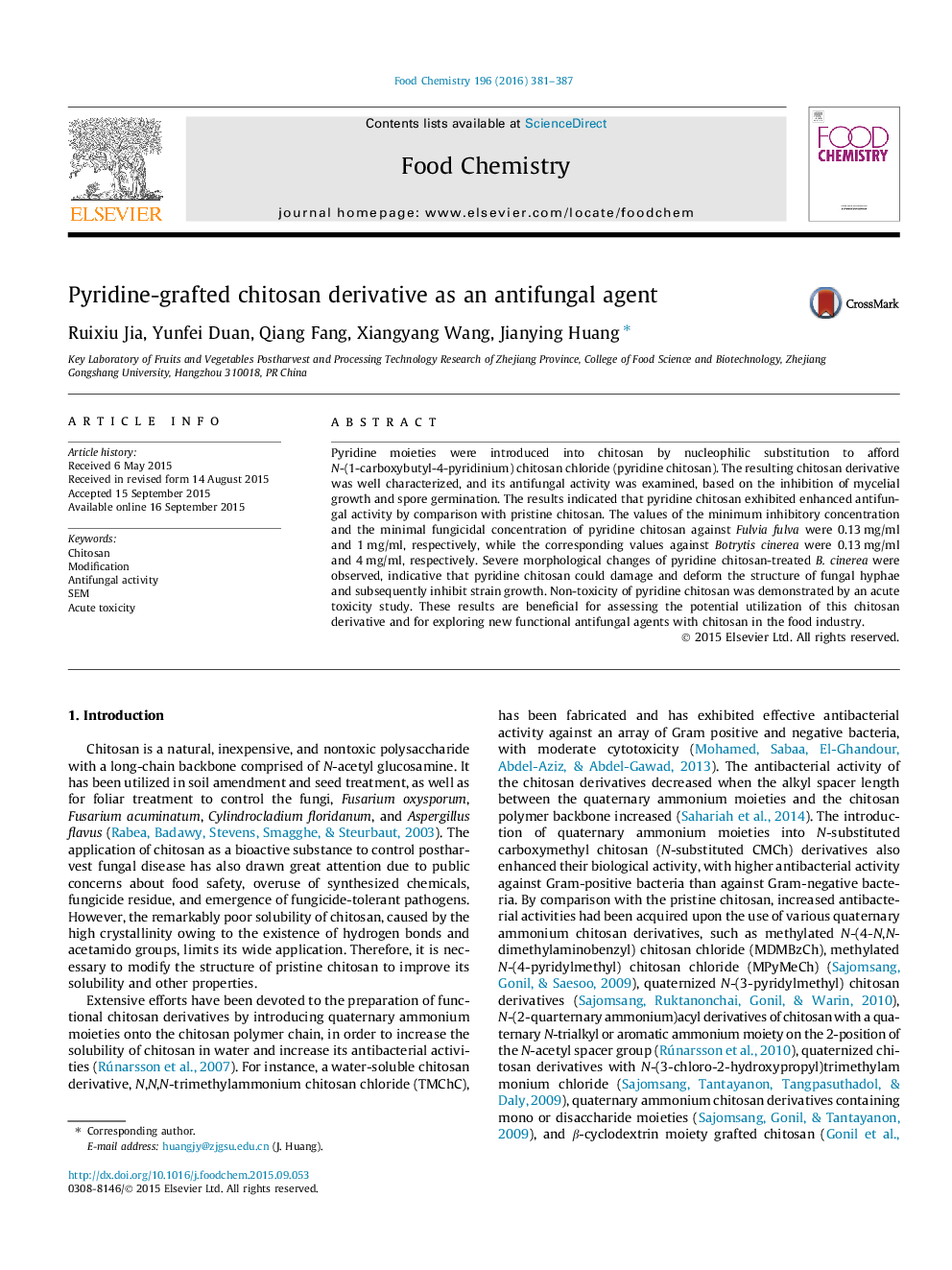| Article ID | Journal | Published Year | Pages | File Type |
|---|---|---|---|---|
| 1184161 | Food Chemistry | 2016 | 7 Pages |
•Pyridine moieties were introduced onto the backbone of chitosan.•The solubility and antifungal activity of the resulting polymer were improved.•Non-toxicity was further demonstrated in the acute toxicity study.•It is potential to be used as an antifungal agent in food industry.
Pyridine moieties were introduced into chitosan by nucleophilic substitution to afford N-(1-carboxybutyl-4-pyridinium) chitosan chloride (pyridine chitosan). The resulting chitosan derivative was well characterized, and its antifungal activity was examined, based on the inhibition of mycelial growth and spore germination. The results indicated that pyridine chitosan exhibited enhanced antifungal activity by comparison with pristine chitosan. The values of the minimum inhibitory concentration and the minimal fungicidal concentration of pyridine chitosan against Fulvia fulva were 0.13 mg/ml and 1 mg/ml, respectively, while the corresponding values against Botrytis cinerea were 0.13 mg/ml and 4 mg/ml, respectively. Severe morphological changes of pyridine chitosan-treated B. cinerea were observed, indicative that pyridine chitosan could damage and deform the structure of fungal hyphae and subsequently inhibit strain growth. Non-toxicity of pyridine chitosan was demonstrated by an acute toxicity study. These results are beneficial for assessing the potential utilization of this chitosan derivative and for exploring new functional antifungal agents with chitosan in the food industry.
